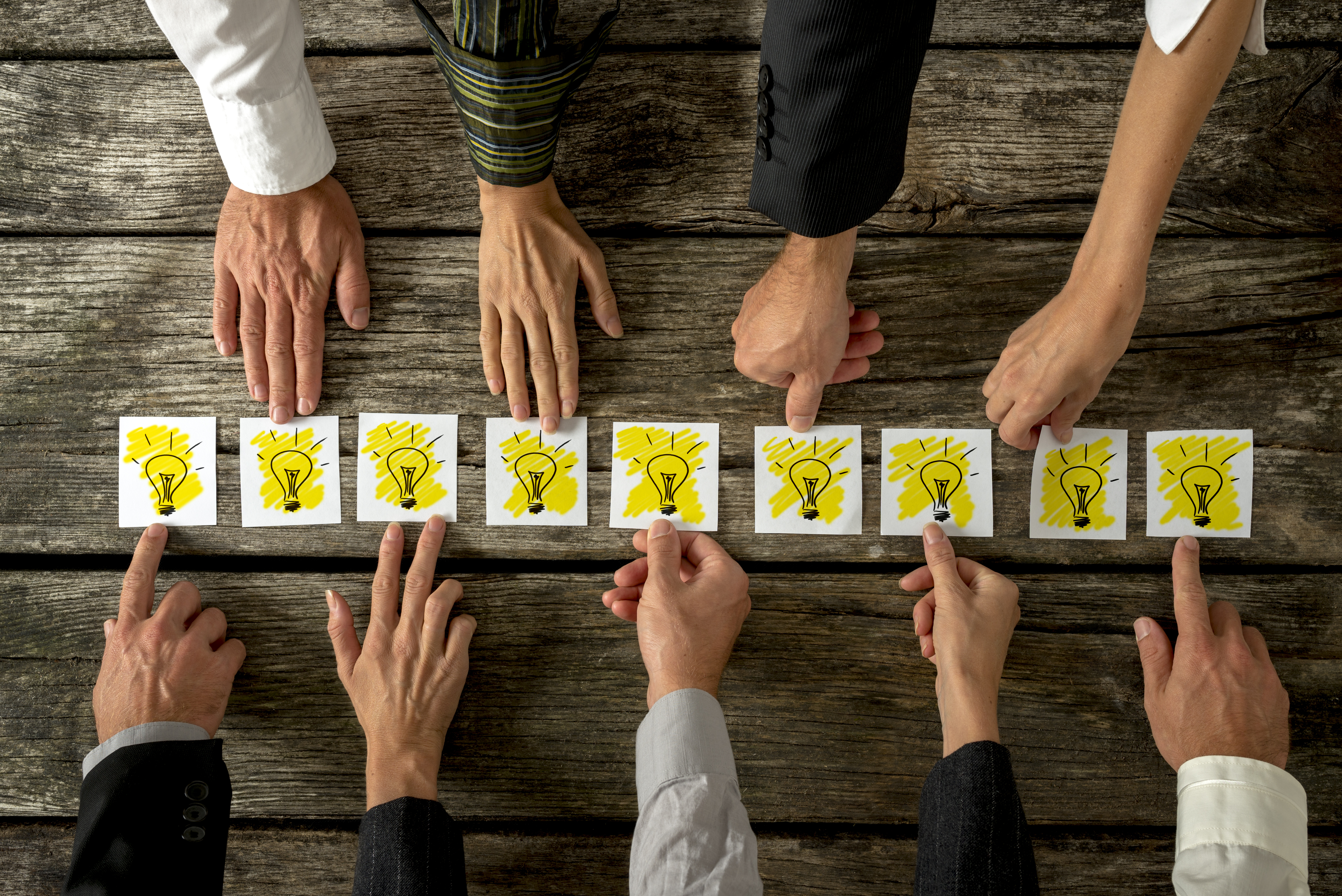
How to Harness the Power of Design Thinking To Transform HR
First and foremost, you may be asking yourself, “what exactly is design thinking?”. In essence, design thinking is a systematic, iterative and human-centered approach to developing user-friendly services, products, and solutions. From enhancing the end-to-end employee experience to transforming back-office HR processes, design thinking equips HR leaders with an actionable, customer-focused framework for solving complex challenges.
Though still in its infancy, leading-edge companies such as IBM, Microsoft, Coca-Cola, GE, and Allstate are already using design thinking to more effectively collaborate with, understand and build HR services for their internal customers. As a result, they’ve ushered in a new era of lean, agile and digitized HR without having to invest in costly IT systems or consultants. For example, according to Krystal Webber, Global Design & Strategy Leader at IBM Blockchain Services, IBM used design thinking to re-engineer their performance review system, develop new personalized learning system infused with artificial intelligence and improve the way they onboard early career professionals in large new hire programs.
Applying design thinking to HR is easier than you think and requires little to no financial investment. Just time, willingness and commitment. The first step in this journey is to familiarize yourself with the 5 pillars of design thinking: Empathize, Define, Ideate, Prototype, Test.
#1 Empathize
In order to understand your customer, you must “become the customer.” The foundation of any design thinking initiative is a sound understanding of your customer’s needs, wants, expectations and frustrations. Deploying employee surveys, hosting focus groups and conducting one-on-one user interviews are 3 proven ways of accomplishing this. As Krystal Webber, Global Design & Strategy Leader, IBM Blockchain Services explains “We ensure sponsor users are engaged on every project, meaning that we very work directly with those people whose lives will be impacted by the solutions we create. We have many techniques for engaging users that include interviews, workshop participation, and user testing/prototyping, among others.”
Melissa Hui, Founder/Principal of Context Leap, elaborates further, “we focus on using methods from social science research and coaching/counseling. For most organizations, we start with a listening tour where we create a semi-structured conversation to collect insights and feedback from various people within the organization or ecosystem to understand needs, wants, concerns, etc. We’ve developed a more robust cultural assessment program where we combine interviews, listening tours, office hours and 1:1s, engagement surveys, roundtable discussions, and observation (+anthropological research methods) to get rich cultural and behavioral insights on a team, multiple teams, or an organization/division.”
In summary, the 4 core steps for building empathy between you and your user are:
- RESEARCH: Learn about the problem you are trying to solve by reading relevant studies, whitepapers and reports
- WATCH: Observe and track user behavior
- LISTEN: Survey & interview customers
- VISUALIZE: Illustrate customer attitudes and behaviors with empathy mapping and customer personas
#2 Define
In order to successfully tackle the issue, you must clearly define the problem. The goal of phase 2 is to transform the insights gleaned from phase 1 into a meaningful and actionable problem statement. For example, “how might we provide aspiring leaders with the resources they need to grow and learn?’ or “employees need and want regular, ongoing feedback to ensure they know how they’re doing and are developing the right skills.”
To get the ball rolling on defining the problem, start by gathering and analyzing all of your findings from phase 1 and start asking questions that can help you look for ideas for solutions such as:
- What is the problem or need?
- Who has the problem or need?
- Why is it important to solve?
- How might we solve this problem?
According to the Interaction Design Foundation, robust problem statements have the following 3 things in common. They’re:
- Human-centered. The issue is framed from the point of view of the user not the organization
- Broad enough for creative freedom. The statement isn’t so narrow you lose the ability to experiment and innovate. Avoid mentioning specific solutions, technologies or strategies that could be used to solve the problem.
- But narrow enough to make it manageable. If your problem statement is too macro or general building a game plan for addressing that issue will be incredibly daunting if not impossible. Instead try breaking down large-scale, major challenges into smaller, more manageable problems.
Chris Haver, AVP HR Shared Services, WVU Medicine shared how his organization successfully transitioned from the Empathy to Definition phase, “we have employed a Voice of the Customer survey to customer groups to better understand what they expect from Human Resources, how they prefer to engage with HR Services and where they find opportunities in the current state model. This method has helped to fuel design options as well as to baseline the current state service delivery. With the VoC responses, we designed Customer personas that defined our different customer needs based on expected life experiences and engagement preferences. These personas drove our process and content development and we have implemented these personas within our operations.”

#3 Ideate
Once you have your problem defined, the next step is to start identifying and exploring potential solutions to the problem statement you’ve created. In the design thinking context, brainstorming should be a semi-structured, team-based method of rapid idea generation. The goal of this stage is not to come up with one, definitive answer or solution but to develop a large collection of potential approaches. Second to this, another aim of this session is to engage stakeholders and get them involved in the design process. Facilitators of these sessions should push participants to think beyond the obvious solutions and explore new, novel ideas. Participants should also be encouraged to defer judgment and throw out as many ideas as possible, even “bad” ones as they too can spark creativity in others.
In terms of how these brainstorm sessions should be conducted, there are a wide variety of approaches and strategies. As Cornelia Kunert, Employee Experience & Engagement Expert, Pro Insurance Solutions told us, “I have various ways of kicking off these sessions. I usually begin with some warm-up activities and fun quizzes to help everyone get to know each other.” Some facilitators prefer these ideation meetings to be more free form whereas others use popular brainstorming techniques such as:
- Brainwrite: before beginning a verbal discussion, all participants write their ideas anonymously on small pieces of paper
- Worst Possible Idea: break the ice by challenging the group to generate as many terrible ideas as possible
- SCAMPER: a series of thought sparkers or provocations which help you innovate by looking through different lenses
- Reversed Brainstorming: Instead of asking how to solve the problem, reverse brainstorming focuses on the idea of what causes the problem or how to achieve an opposite result of what is expected.
#4 Prototype
Make your ideas tangible. By building a prototype for testing purposes, you’ll be able to gain first-hand insights into how your users will interact with your new HR process, service or initiative. Furthermore, prototypes enable you to fail early and cheaply as they’ll expose a weak or unsuitable approach before you’ve invested too much time or money.
The goal of your prototype is to demonstrate the functionality of your new solution to users, however, they don’t have to be expensive or time-consuming to create. In fact, low-fi approaches such as storyboarding or clickable wireframes are often more effective and allow quick turn around time. Just FYI, you can view a comprehensive list of prototyping techniques here.
Some best practices for prototyping your new employee-focused solution or service are:
- Remember, prototypes are not a preview of your final product but rather a means to start a dialogue and elicit feedback on your ideas. You can even break down your project into smaller elements and prototype/test those first.
- Speed is king. You don’t want to speed too much time building your initial prototype or implementing feedback. Choose a prototyping approach that allows you to make changes quickly. One of the ideas behind this is that, if you invest a lot of time and resources into the prototype, you may develop an emotional attachment to it. At its best, design thinking takes the “ego” out of the equation to ensure design decisions objective.
- With that in mind, be mentally prepared to scrap the prototype. Over the course of any given design thinking project, you should create and test numerous prototypes. Once again, the mantra of the prototyping/testing phase is: fail early, often and cheaply.
#5 Testing
Finally, test your HR solution, service, process or initiative prototype with customers to understand what works and what doesn’t. Use that feedback to rapidly and continuously improve your prototype until your customer approves of the final product. As mentioned at the beginning of this article, design thinking is an iterative process so if the customer is unhappy with the product, you may have to go all the way back to phase 1 and re-frame the problem statement/definition.
When presenting or demonstrating the prototype to the customer, you want to make sure you set expectations (design thinking can be a messy process) and provide clear cut instructions. Aside from that, it’s important that you remain an observer. If you give them too much information, you may miss a potential user pain point later on. Also, don’t be surprised if users go in a completely different direction than expected. Testing should expose new insights about users behavior to incorporate into your phase 1 findings.
Another best practice is to allow your user to compare and contrast 2 alternative solutions. Encourage users to talk through their experiences and ask follow up questions to gain more insight into their thoughts. If someone doesn’t like a particular component, ask why.
In summary, we asked Krystal Webber of IBM Blockchain Services to share her top pearls of wisdom to ensure success:
- Focus on user outcomes
- Treat everything as a prototype
Conclusion
The age of consumerized HR is upon us and design thinking can be a powerful as well as a cost-effective tool for building customer-centric HR services, solutions and processes. However, as Melissa Hui explains, “the most challenging aspect is both changing mindsets (being creative and bold) and scaling the behaviors and environmental conditions to ensure the success of design thinking in HR.” Furthermore, convincing people within HR that engaging with users to elicit feedback and co-design HR solutions from the get-go is typically quicker, easier and far less risky that than traditional, HR-first approach can be difficult. Before you jumpstart your own design thinking for HR initiative, it’s critical that you make sure that HR leaders and project managers fully understand and are bought into the design thinking approach. (P.S. you can find a great, HR-centric introduction to Design Thinking for HR to share with skeptical colleagues here.)
The good news though is that design thinking can also be a great first step in initiating such transformation. By sparking innovation, creativity and collaboration, design thinking can re-frame how organizations approach some of their biggest business challenges. One thing is clear: the workforce and what they expect from their employers is rapidly changing. Companies that fail to keep up risk not having the right talent in place to ensure ongoing, sustainable success.
About the Author
Elizabeth Mixson is an NYC-based writer who specializes in HR, Workplace Design & Cultural Transformation. She currently works for IQPC managing, editing and cultivating their HR-focused content.
LinkedIn: www.linkedin.com/in/elizabeth-mixson-019a8b26
Twitter: https://twitter.com/MixsonElizabeth
[contact-form][contact-field label=”Name” type=”name” required=”true” /][contact-field label=”Email” type=”email” required=”true” /][contact-field label=”Website” type=”url” /][contact-field label=”Message” type=”textarea” /][/contact-form]
